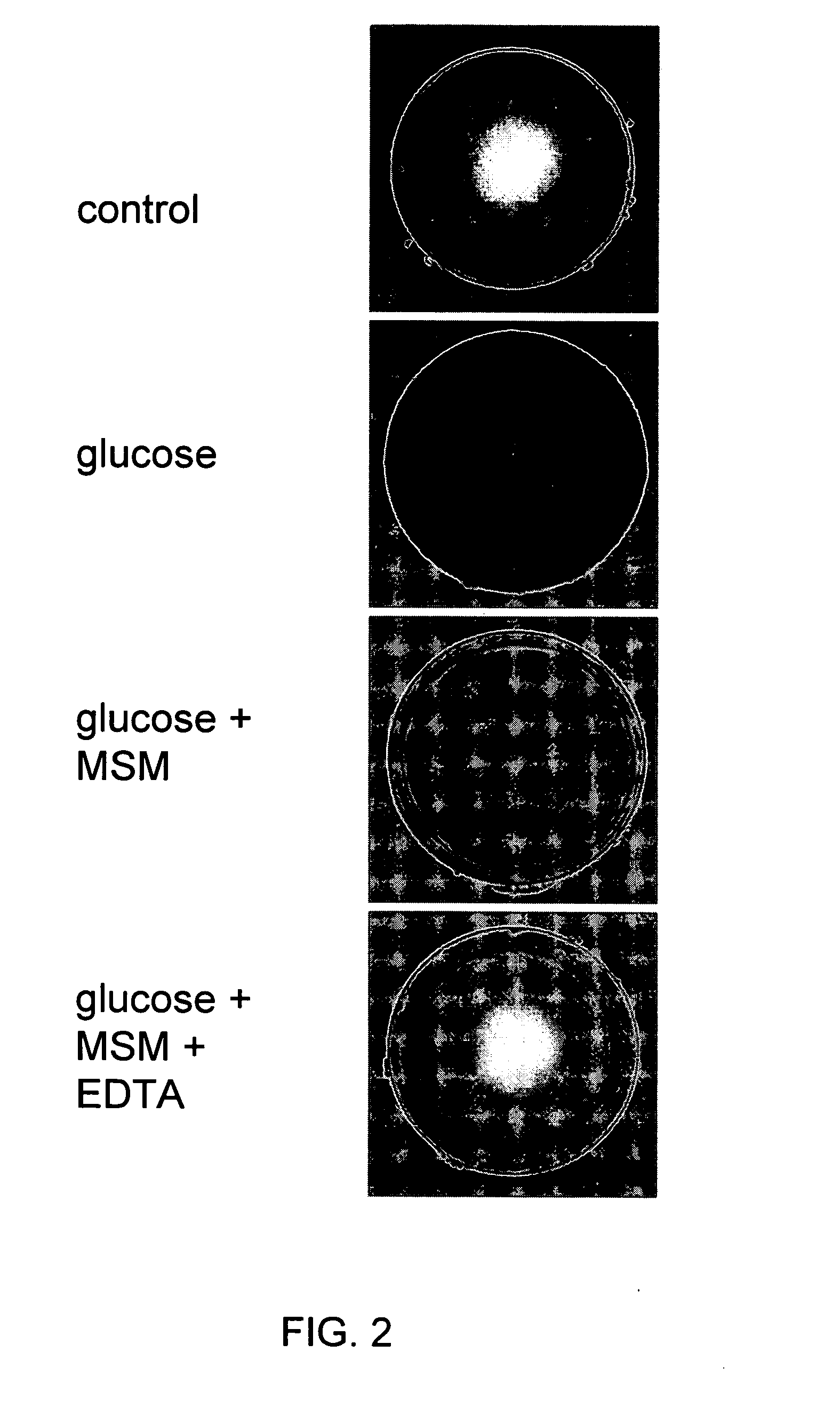Prevention and treatment of ophthalmic complications of diabetes
a technology for ophthalmic complications and diabetes, applied in the field of ocular disorders and ocular diseases, can solve the problems of insufficient glucose take-up, affecting the function of the eye,
- Summary
- Abstract
- Description
- Claims
- Application Information
AI Technical Summary
Benefits of technology
Problems solved by technology
Method used
Image
Examples
example 1
Prevention of Cataractogenesis in Diabetic Rats
[0067] Male Sprague-Dawley rats weighing 75-100 g were obtained from Central Animal Care Services at the University of Texas Medical Branch. The NIH guidelines and ARVO statement for the Use of Animals in Ophthalmic and Vision Research were strictly followed for the welfare of the animals.
[0068] Twenty-four rats were randomly assigned to six groups, each group having four rats. Intraperitoneal injections of streptozotocin (STZ) were used for diabetic induction in five of the six groups. STZ at a dosage of 70 mg / kg body weight was diluted in PBS buffer vehicle (pH 7.0). One group of control animals received an injection of PBS buffer alone. Animals were allowed to adjust to their diabetic state for 4 days.
[0069] Four days post-STZ administration, blood glucose levels were assessed in a glucose meter. A distal tail snip generated the 5 μl quantity of blood necessary for analysis. Weekly glucose levels were determined at 9 AM by removin...
example 2
Evaluation Of Glucose-Induced Toxicity In Rat Lens Organ Culture (RLCE)
[0080] Animals. Male Sprague-Dawley rats weighing 200-250 g were obtained from Central Animal Care Services at the University of Texas Medical Branch. The NIH guidelines and ARVO statement for the Use of Animals in Ophthalmic and Vision Research were strictly followed for the welfare of the animals.
[0081] Rats were sacrificed with using 100% carbon dioxide at a low flow rate (25-30% of the volume of the cage per minute) with two rats in a cage. After the rats stopped breathing for about 2 minutes, the eyeballs were removed.
[0082] Preparation of Reagents. [0083] Medium 199+0.1% Gentamicin: 250 ml of M199+250 μl of Gentamicin. [0084] 400 mM MSM (FW 94.2): 376 mg MSM+PBS to final volume to 10 ml. [0085] 50 mM EDTA (Tetrasodium Salt FW 380): 190 mg EDTA+PBS 8 ml, adjust pH to 7.2 with HCI. [0086] Adjust final volume to 10 ml. [0087] 2.5 M Glucose (FW 180): 900 mg glucose+2 ml dd H2O
[0088] Experimental Procedure. ...
example 3
Effect of MSM and MSM / EDTA on Viability of Human Lens Epithelial Cells (HLEC) Subjected to Glucose-Induced Toxicity
[0096] Materials. EDTA (Tetrasodium Salt), ferrous ammonium sulfate, ferric chloride, adenosine 5′-diphosphate (ADP), ascorbic acid, and H2O2 were purchased from Sigma. All cell culture medium components were from Invitrogen.
[0097] Cell Culture and Treatment. Human lens epithelial cells (HLECs) with extended life span were cultured in DMEM medium containing 0.1% gentamicin and supplemented with 20% fetal bovine serum at 37° C. in a 5% CO2-humidified atmosphere. 1.0×105HLECs / ml (Passage 5) were seeded in 12-well plate overnight prior to the addition of glucose, MSM or MSM / EDTA. The wells were divided into six groups of two wells.
[0098] Cell viability. Cell survival was determined by Trypan Blue staining and counting with a hemocytometer. Dead cells stain blue, while live cells exclude Trypan Blue. Cell viability is represented as a percentage corresponding to the numb...
PUM
| Property | Measurement | Unit |
|---|---|---|
| molecular weight | aaaaa | aaaaa |
| molar ratio | aaaaa | aaaaa |
| molar ratio | aaaaa | aaaaa |
Abstract
Description
Claims
Application Information
 Login to View More
Login to View More - R&D
- Intellectual Property
- Life Sciences
- Materials
- Tech Scout
- Unparalleled Data Quality
- Higher Quality Content
- 60% Fewer Hallucinations
Browse by: Latest US Patents, China's latest patents, Technical Efficacy Thesaurus, Application Domain, Technology Topic, Popular Technical Reports.
© 2025 PatSnap. All rights reserved.Legal|Privacy policy|Modern Slavery Act Transparency Statement|Sitemap|About US| Contact US: help@patsnap.com



